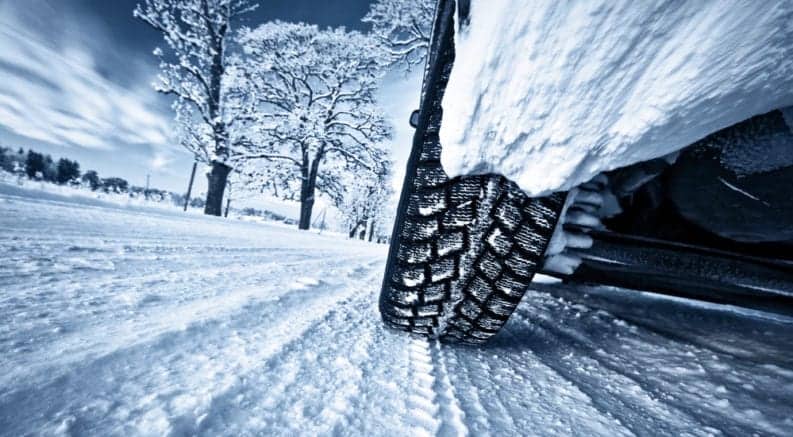Getting your tires changed is an important part of regular automotive maintenance – and something you should do as a proactive part of keeping your car in good shape. While we’ve all been in emergency situations where a tire is blown out and needs to be replaced, it’s better to stay ahead of it and keep your tires in good shape. That means changing your tires pretty regularly based on general wear and tear, as well as the lifetime estimated by the manufacturer.
Of course, when it’s time to get your tires changed, you want to make sure you pick the right ones for your vehicle. Sure, you could rely on the helpful salesperson or mechanic to replace your tires with the right ones, but why do that instead of picking them yourself? It’s always better to know what you should be looking for and be able to spot a mistake if one happens, to ensure you stay safe on the road. So let’s look at what you need to know to help you pick the right tires for your vehicle.
#1: Know When to Replace Your Tires
First things first, you should know when it’s time to get your tires replaced. So obviously, if you’re sitting by the side of the road with a blown out tire right now reading this on your phone, yes it’s time for you to replace your tires. In general, however, we’re going to try to avoid that situation and consider a routine tire change or replacement.
General wear and tear are one of the major things to look for. What we’re talking about here is the tread on your tires, which is the part of the tire that is raised above the rest of it. This tread is very important for keeping control on the road and improving traction, especially in wet or snowy conditions. You want to make sure the tread is still clearly raised above the rest of the tire.
You should also be able to see a date on the tire itself – and make note of this when the tires are new to make sure you remember. Even aside from general wear and tear, tires just have a lifespan that they are good for based on the materials in them. Once you hit this point, usually about 6 years or more past the date of manufacture, then strongly consider replacing them.
#2: Check Your Car and/or Owner’s Manual
Who would know what tire your vehicle should have better than the manufacturer? You should be able to find information about the tires you need on your vehicle on the inside of the door panel of your car. Otherwise, the owner’s manual of your vehicle most likely includes information that you need to know when picking the right tires for your car.
Of course, this information is probably in the form of a tire code, or if it’s not, then you’ll see a tire code when you look at actual tires. These codes can be very confusing and seem like a foreign language. But that’s why you should…
#3: Learn to Read a Tire Code
So, when you look at the side of a tire you are going to see a lot of letters and numbers, but they all give you information about that tire, and that’s a good thing. A sample tire might have something on it like “P215/60R16 94T.” At first, that seems like madness, but once you know how to read that, it’s really not so bad. We’ll go from left to right and break this down.
The “P” that starts it off indicates it is a tire for a passenger vehicle, which is mostly what you’ll see. If you see an “LT” at the beginning, then that means it’s for a light truck. Following that is “215/60R16.” That big chunk of information actually tells you the size of the tire.
In this case, “215” indicates the width of the cross section of the tire in millimeters, “60” tells you the sidewall height is 60% the width of the tire, “R” indicates a radial-ply construction, and “16” means the wheel rim is 16 inches in diameter. Finally, “94” indicates how much weight the tire can bear and “T” tells you how fast it can go safely.
Ok, that’s a lot of information, but you need to know that basically, you’ll see a code like that on the door of your car or in the owner’s manual. Just be sure you match that to whatever tire you choose, and you’ll be in good shape.
#4: Consider Your Driving Conditions

You will also find information on the tire about the conditions it is designed for. Now, this isn’t something you’ll find from your vehicle’s manufacturer, because it depends on where you live and the type of weather you deal with while driving. If you’re in very dry conditions where you don’t see much rain, then you have different tire requirements compared to someone in an area with a lot of rain and snow.
Performance and Ultra High-Performance summer tires are excellent in dry conditions but become terrible in wet and snowy conditions. All season tires are about what you would expect, handling pretty well in just about any type of weather and road condition. Winter or snow tires handle very poorly on dry roads but are excellent in snowy conditions.
#5: Consider Your Driving Style
If you like to open it up on the highway a little bit, then you might want to look at a performance tire for your vehicles. These are tires designed to give you better traction and handling, so you can control your vehicle at somewhat higher speeds than other tires. Of course, you do not want to drive recklessly or go over the speed limit, no matter what kind of tires you have. There is no tire in the world that will keep you safe if you’re driving too fast and someone suddenly swerves in front of you and slams on their brakes.
Ultra-high performance tires are excellent for anyone interested in taking their car onto a race track every now and again. These give incredible handling and traction control, so you can zip around a track, and then drive home on the highway. If you tend to just drive around town, going to your job, or running errands on the weekend, then something like a general all-season tire is probably the best choice. There are also off-road tires perfect for anyone who likes to rough it up in tough conditions where other tires tend to lose traction.
#6: Put that All Together!
With all of these things in mind, you can now bring it all together and figure out exactly what kind of tires you need. Look at what the manufacturer of your vehicle indicates, and be sure to follow that when looking at the code on the tire. As you consider things like high performance or snow tires, think about the weather and how you like to drive. Now you can confidently shop for new tires, and you’ll be able to notice if a mechanic or salesperson tries to get you to pick something that is wrong for you or your vehicle.

